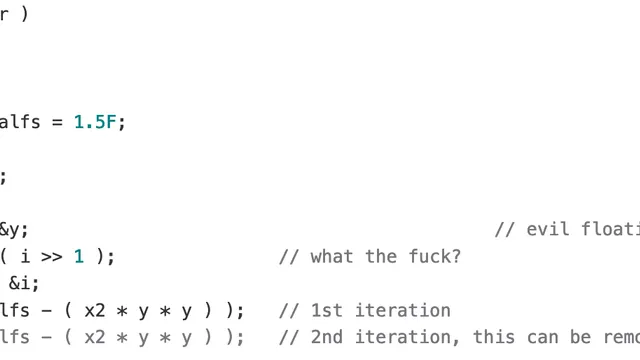Leveraging Floating Point Representation to Efficiently Calculate x^(1/m) without Special Operations
In 1999, an unintuitive method was employed in the Quake III Arena graphics library to quickly calculate surface normals for lighting and shading. I will expand this method to calculate x^(1/m), where m is a non-zero integer, as well as for other approximate exponential calculations. For example, if m=−1, the calculation becomes a division. The method uses floating point representation to find an initial guess, followed by one or two steps of the Newton-Raphson method.
Analytics
Comments
3
Intriguiing
